Chania harbor quay on the island of Crete, Greece is a small, mostly commercial place and one of the central spots for activity in the city. There are dozens of restaurants and bars along the waterfront. In the first week of March, only a bit more than half the dining places looked open on the weekend, fewer on weekdays.
Chania province in western Crete is known for beaches, but ocean temperatures in winter are generally cold with daytime temperatures ranging mostly 5-15 C/41-59 F. With tourist season still two months away and many beach resorts only opening in late April/early May, much of the work I saw happening during my three days and four nights in Chania were preparations in construction, painting and repairs in the weeks before another seasonal throng of tourists arrive. Still, when strolling along the waterfront, I saw more than a dozen restaurants and bars situated around the harbor in Chania feeding a significant number of people.
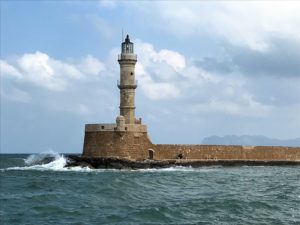
Venetians came to Crete in the 13th century and centuries old Byzantine fortifications were incorporated into the growing port city. The first Venetian walls were constructed beginning in 1336. Two centuries later the Venetians were under threat by Ottoman Empire expansion and new fortifications were constructed to protect the port of Chania. The second Venetian walls, gates, bastions, fortress and harbor lighthouse were constructed from 1536 to 1620.
Fortifications of Chania – wikipedia.
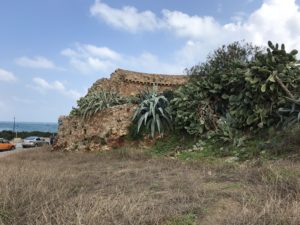
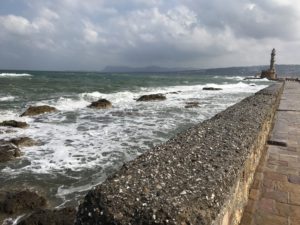
My first day in Chania, after arriving in town from Chania Airport CHQ around 8pm the night before, I walked along the waterfront west of my hotel and around the inner harbor quay to the outer harbor breakwater walls to the lighthouse. That first day had by far the roughest surf and swells during the four days I was in Chania.
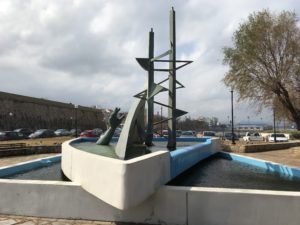
Chania ‘Monument of the Hand’ commemorates the December 8, 1966 ferry disaster of SS Heraklion when over 200 drowned.
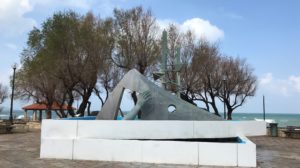
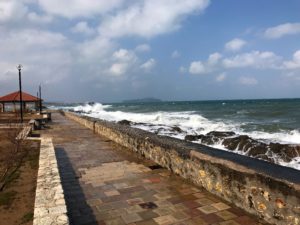
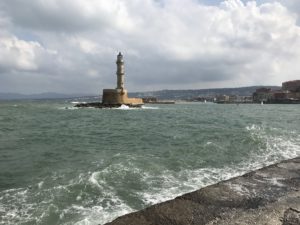
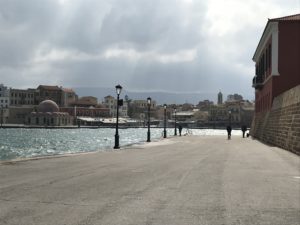
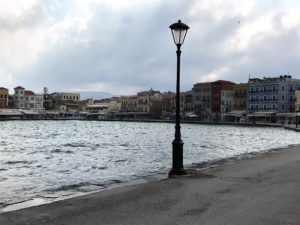
My walk around the harbor quay before noon on a Sunday meant relatively few people up and about. Saturday night at 11pm the restaurants and bars along the harbor quay were packed.
My first order of tourist business in town after my first night staying at Hotel Porto del Colombo was a walk out to the 21 meter lighthouse on the eastern entrance to Chania harbor. The lighthouse is not operational.
Chania lighthouse is frequently called the Venetian Lighthouse, due to its initial construction in 1596. The lighthouse is also referenced as the Egyptian Lighthouse from 1839, when the ruling Egyptians at the time (1831-41) rebuilt the lighthouse giving it a minaret form. The current lighthouse was remodeled in 2006 incorporating more Venetian elements to the structure. While you can walk the breakwater walls to the lighthouse, as I learned from my hike, the lighthouse is gated and closed to visitors.
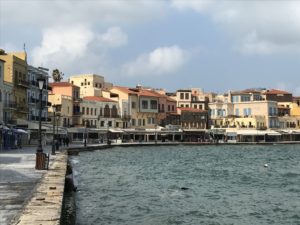
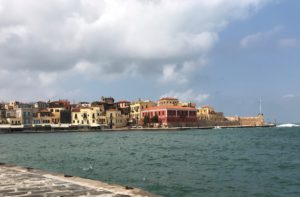
Firkas Fortress was constructed by the Venetians in 1620 to protect the harbor. The red painted building is now the Maritime Museum of Crete.
Küçük Hasan Pasha Mosque
400 years of Venetian rule in Chania ended when the Ottomans conquered the city in 1649. Soon after Ottoman rule, the Küçük Hasan Pasha Mosque was constructed and named in honor of the first Ottoman governor for Crete. Photos from the early 20th century show a minaret beside the mosque.
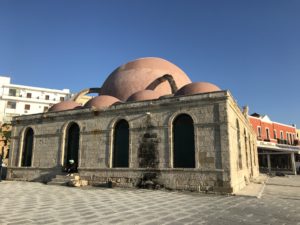
Residents of Crete revolted against Ottoman rule in the late 19th century and in 1898 the island of Crete became an independent state. Crete only became part of Greece in 1913.
After World War 1, Greece went to war (1919-1922) with the weakened Ottoman sultanate and captured territory along the west coast of modern day Turkey, where a population of Orthodox Christians resided. Ultimately the Greek army was defeated. In the 1923 Treaty of Lausanne, a population exchange between Greece and Turkey occurred with 1.2 million Greek Orthodox Christians expelled from Turkey to Greece and 355,000 Muslims in Greece sent to Turkey.
Mosque Küçük Hasan closed at that time and the minaret was destroyed in 1939.
KÜÇÜK HASAN PASHA MOSQUE, CHANIA – inthejungleofcities.com
Küçük Hasan Pasha Mosque – cretanbeaches.com
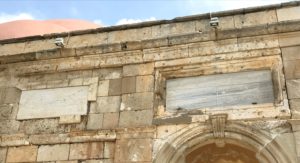
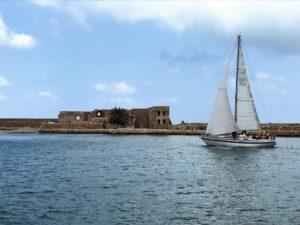
7th century Byzantine Walls in Chania
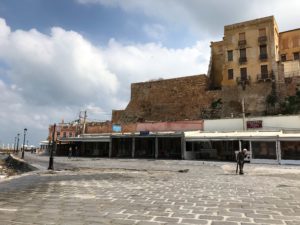
When the Venetians arrived in Chania in the early 13th century, the town already had fortifications with Byzantine walls constructed around the 7th century around the area known as Kasteli hill. This area of Chania has been populated for thousands of years.

Venetian Grand Arsenal shipyards 1585
Not knowing the significance of the large buildings I walked by along the waterfront, taking photographs of the structures was not my main concern. Only later did I learn these massive structures are the Grand Arsenal, historic Venetian shipyards.
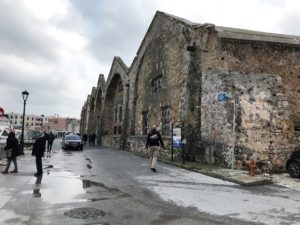
These shipyards were constructed beginning in 1585 on the Chania harbor waterfront and were originally open for ships to sail directly up to the structures. The quay was constructed in the early 20th century.
The Center for Mediterranean Architecture is now an event space housed in these Venetian shipyard structures.
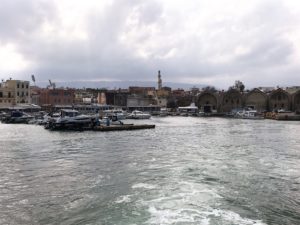
Chania outer harbor breakwater walls walk to lighthouse
As I approached the breakwater path entry on the eastern side of Chania harbor, I had already seen a jogger running along the wall and changing elevation at one point to run along a lower level. Also, somewhere around the Grand Arsenal shipyards, I saw a cyclist pedaling along the top of the breakwater wall.
After walking the different levels of the wall to the lighthouse, I think back to that daredevil cyclist. The path is not smooth for much of the upper levels of the walls higher above the water. The lowest path near the water surface is probably the easiest to walk.
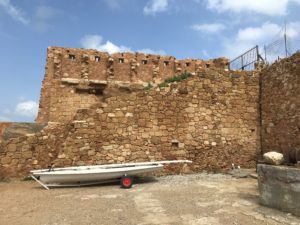
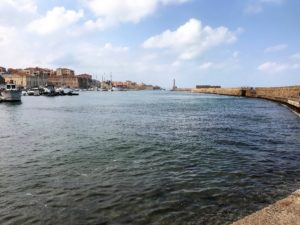
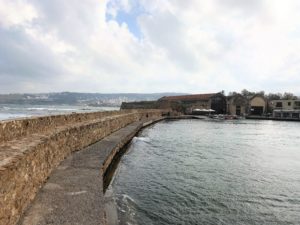
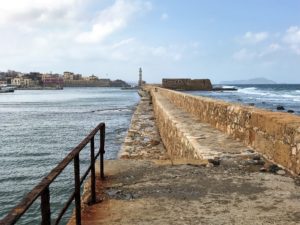
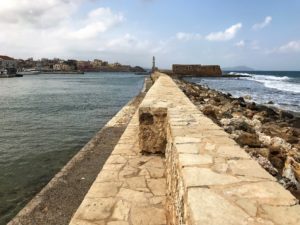
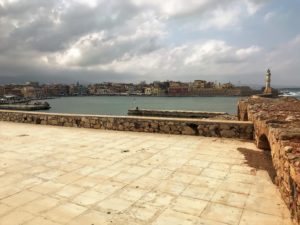
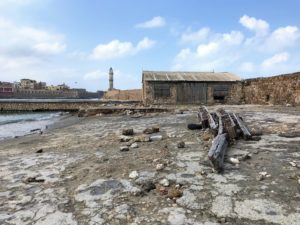
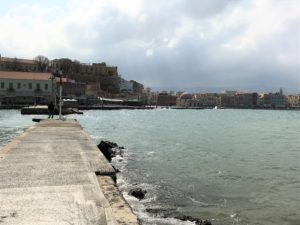
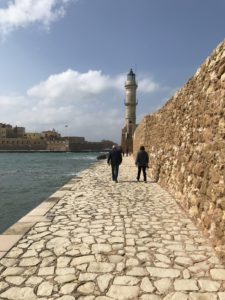
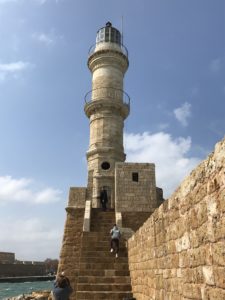
Farther east along the waterfront is The Sabbionere Bastion, one of the original 1536-1568 Venetian fortifications for Chania on the northeast end of the harbor to combat Ottoman attacks.
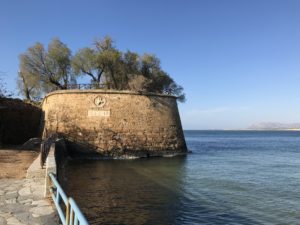
For an even more descriptive article on the sights around Chania harbor, read this visitgreece.gr on The Old Port Area of Chania - A stroll in the town’s most enchanting area.


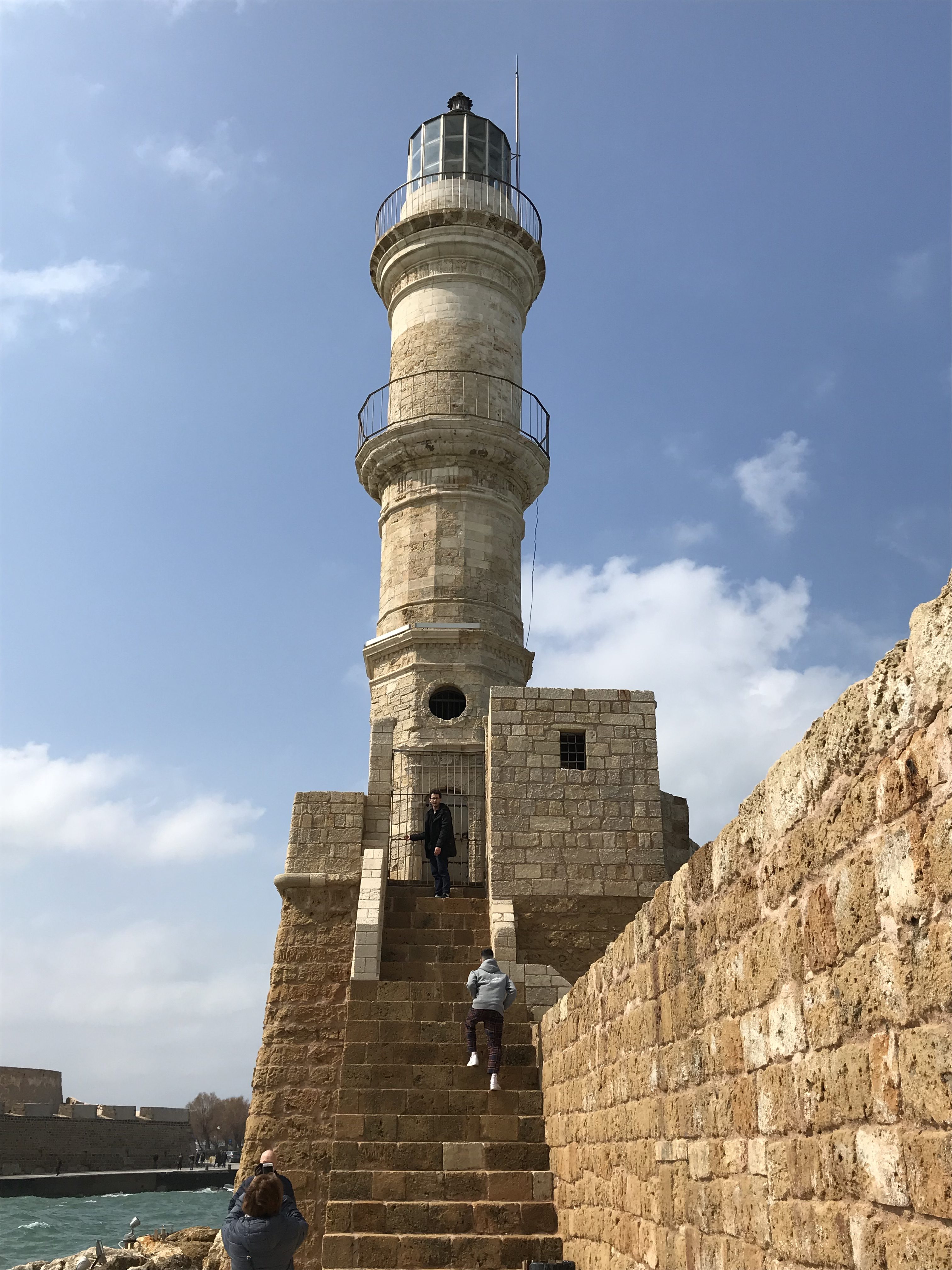

2 Comments
Comments are closed.